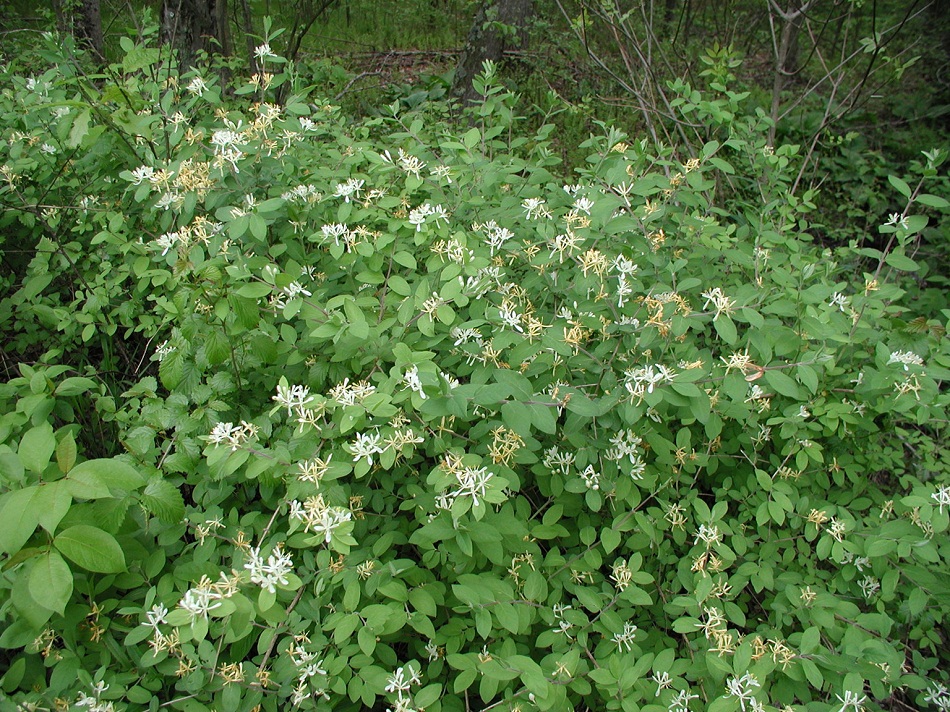 Morrow’s honeysuckle (Lonicera morrowii) is the second of four non-native honeysuckles on the Restricted Noxious Weeds list. It is native to Japan and was introduced to the United States in the 1800s. It was planted for a variety of uses, including ornamental plantings, for wildlife food and cover, and for erosion control. Morrow’s honeysuckle has spread and naturalized in many Eastern and Midwestern states.
Morrow’s honeysuckle (Lonicera morrowii) is the second of four non-native honeysuckles on the Restricted Noxious Weeds list. It is native to Japan and was introduced to the United States in the 1800s. It was planted for a variety of uses, including ornamental plantings, for wildlife food and cover, and for erosion control. Morrow’s honeysuckle has spread and naturalized in many Eastern and Midwestern states.Morrow’s honeysuckle is a multi-stemmed, deciduous shrub that grows to 8 feet tall. Leaves are opposite, 1-2 inches long, oval shaped, hairy on the undersides, and grayish-green in color. Flowers are paired and occur along the stem at the leaf axils. The plants bloom in mid to late spring and the flowers are white to pale yellow. The fruits are paired, round, and are reddish to orange. The bark is light brown and shaggy.
Morrow’s honeysuckle is adapted to many habitats. It grows well in woodlands, roadsides, mature and disturbed forests, savannas, fence rows, and pastures. It also grows well in full sun to shade and moist to dry or sandy soils. Morrow’s honeysuckle reproduces through seed dispersal by birds and through root suckering. It can suppress native plants by forming dense monocultures that reduce species diversity.
Morrow’s honeysuckle is a Restricted Noxious Weed in Minnesota. Although landowners are ultimately not required to control or eradicate Restricted Noxious Weeds on their properties, they are encouraged to manage Morrow’s honeysuckle appropriately to prevent future spread of this species and degradation of native habitats. Several management tactics are available for Morrow’s honeysuckle. For all options, infestation sites will need to be monitored and treated repeatedly until the seedbanks are depleted.
- Do not plant Morrow’s honeysuckle and eradicate existing plants on your property.
- Young plants can be pulled by hand. Mature plants can be removed by repeated cutting or mowing.
- Prescribed burning can be an effective tool to control infestations in combination with other techniques. Spring burning can kill seedlings and the tops of mature plants. Make sure to contact the Minnesota Department of Natural Resources to learn more about control burning practices and regulations.
- Foliar and cut-stem application of herbicides that translocate their active ingredients into the root system can be very effective. Treatments will need to be repeated for several years to eradicate a population. If using herbicide treatments, check with your local University of Minnesota Extension office, co-op, or certified landscape care expert for assistance and recommendations.

